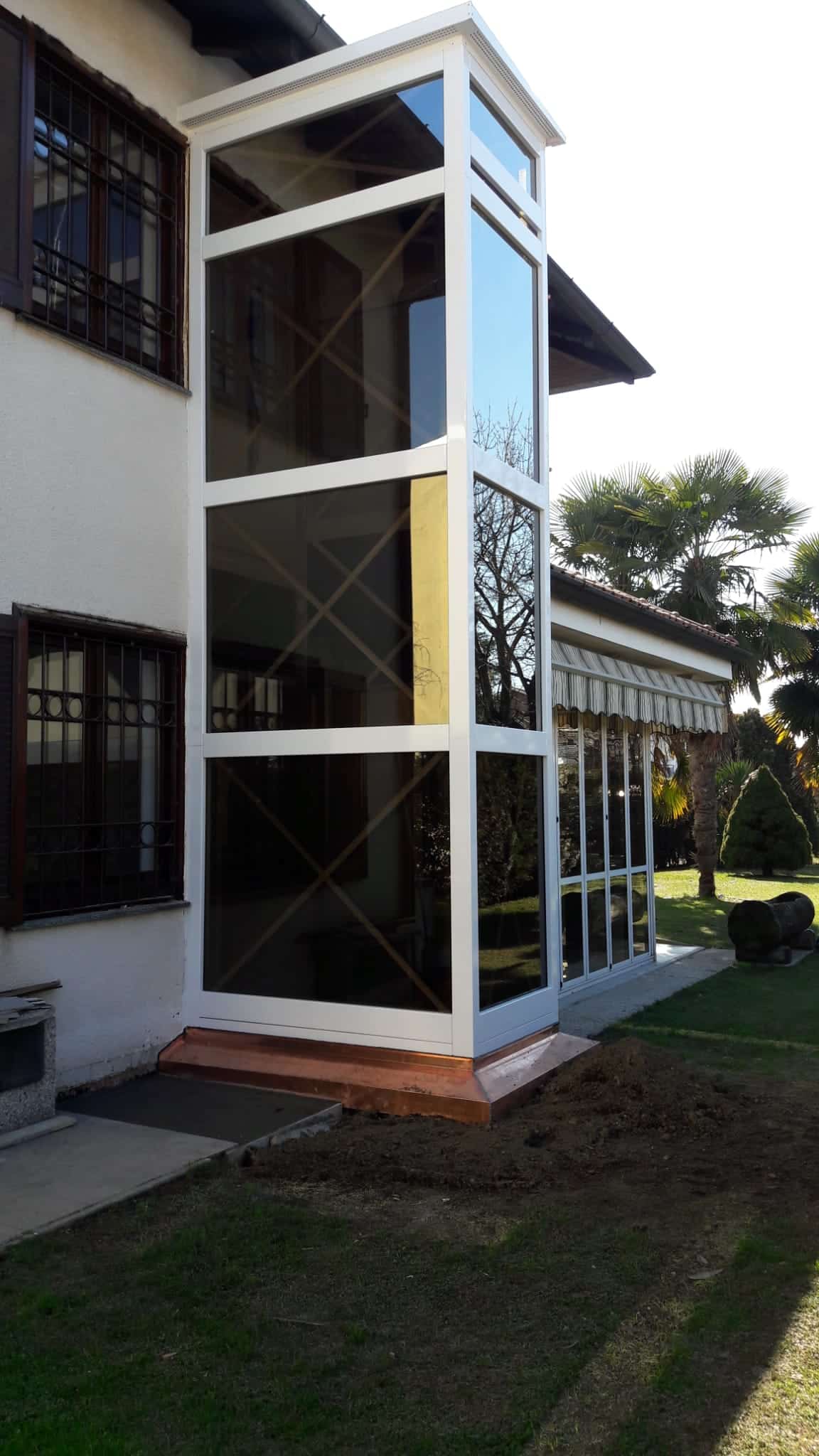Home elevator: the complete guide

Table of contents
1. A brief history of residential elevators
The first reference to a form of vertical transportation dates back to the Roman era.
The architect Vitruvius, in his writings, reports that Archimedes built his first elevator in 236 BC. It consisted of a cabin supported by hemp ropes, pulled manually or by animals.
This same operating mechanism was also used in later periods, integrating drive systems based on hoists or winches.
Until the eighteenth century, these rudimentary elevators were mainly used for transporting materials.
The first passenger elevator was installed in the Winter Palace in 1793. During the 19th century, elevators began to be used in factories and tourist attractions.
It is worth mentioning the installation of a prototype elevator designed by the architect Gaetano Genovese in 1845 in the Royal Palace of Caserta.
Residential elevators didn’t become widespread until much later: after the Second World War they began to be installed in new buildings.
2. Types of residential elevator
Residential elevators can be grouped according to their technology or their structural characteristics.
Based on the type of operation, we can divide them into:
- hydraulic elevators,
- pneumatic vacuum lifts
- and drum or counterweight lifts.
Then there are battery-powered electric lifts: this is an innovative technology, pioneered by ARE, that allows for ecological and efficient systems.
Another way to classify residential lifts is based on their intended use.
In the next few paragraphs we’ll look at the best solutions designed by ARE for different types of homes.
3. What are the minimum dimensions required for residential elevators?
The dimensions of a residential elevator can vary. However, there are minimum requirements to be met that are aimed at guaranteeing accessibility to all types of users, particularly those with limited mobility.
The regulation governing the minimum requirements for elevators can be found in the Ministerial Decree – Ministry of Public Works June 14, 1989 No. 236.
In addition to the minimum dimensions required, the decree also regulates safety measures, dimensions and type of control panel, acoustic signals, elevator doors and landing doors.
For new buildings, the minimum dimensions for the elevator car to allow access to disabled persons are: 1.30 m deep and 0.95 m wide.
For buildings undergoing renovation, where there is not enough space, the minimum dimensions of the cabin are: 1.20 m deep and 0.80 m wide.
4. The best residential elevator for each type of building
Residential elevator for new buildings
In new buildings, it is possible to choose an elevator based on its design and cutting-edge technological features: in fact, there are no constraints related to available space.
The best choice for this type of building is to focus on energy efficiency and environmental sustainability, two key points of ARE technology.
The elevator ZEN-0 is the perfect solution: with a power consumption of 500W and a design that can be completely adapted to the architectural style of the building, it is at the top of the residential elevator market. ZEN-0 uses the patented ARE Smart Power system that guarantees intelligent energy management.
Thanks to this technology, the excess energy produced by the elevator during operation is stored in batteries and reused for subsequent trips, thus reducing consumption and at the same time polluting emissions.
Find out more about the ZEN-0 Elevator
5. Residential elevator for renovations of existing buildings
When it comes to existing buildings, there may be numerous structural constraints: limited space, noise and vibrations can limit the choice of elevator to be installed.
ARE offers customized solutions that ensure minimal impact on the structure: it will be possible to design the elevator size and adapt it to the characteristics of the target building. Furthermore, ARE lifts are MRL (Machine Room Less), meaning they don’t require a dedicated machine room, which has a positive impact on the space needed for installation.
Even in the case of problems related to vibrations and noise, ARE lifts are the perfect solution: they are able to guarantee maximum silence during use.